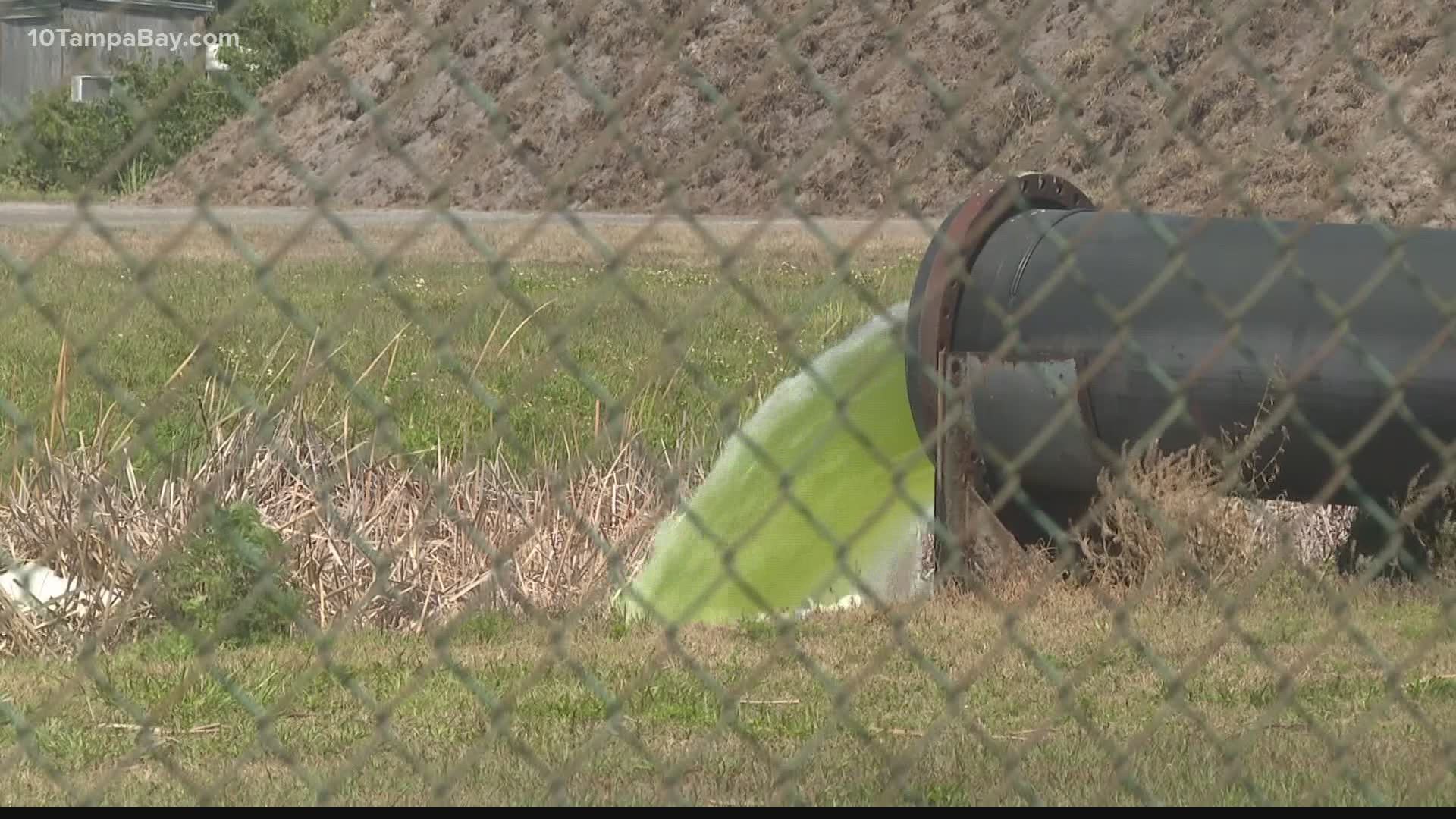ST. PETERSBURG, Fla. — As red tide wreaks havoc in the Bay area, many continue to point the finger at Piney Point and the 215 million gallons of wastewater rich in nutrients known to fuel the toxic algae dumped from the former fertilizer plant into Tampa Bay in April.
Asked about the link, Gov. Ron DeSantis suggested there wasn’t any during a press conference in St. Petersburg last week.
“I think the scientific consensus is clear, it didn't cause the red tide,” DeSantis said of Piney Point. “The red tide was here—I think the biggest impact on Tampa Bay was Elsa, unfortunately.”
THE QUESTION
Is the scientific consensus clear the Piney Point spill did not cause red tide? And what, if anything, does Elsa have to do with it?
THE SOURCES
- Lisa Krimsky, Water Resource Regional Specialized Agent with the University of Florida
- Maya Burke, assistant director of the Tampa Bay Estuary Program
- Bob Weisberg, professor of oceanography specializing in harmful algal blooms and spill tracking at the University of South Florida
THE ANSWER
No, the "scientific consensus" isn't clear that Piney Point did not cause red tide. Elsa was a likely contributing factor. Research into the extent of how the discharge from the former fertilizer plant is affecting the water is ongoing.
WHAT WE FOUND
While researchers and scientists agree the Piney Point spill is impacting water quality, to what end remains inconclusive.
Environmental advocates have directly correlated the dump with worsening red tide conditions. Local estuary program directors Ed Sherwood and David Tomasko said during a public forum Friday the amount of nitrogen pumped into the Bay over a 10-day period was as much as what the Bay typically gets in an entire year.
“Some of the science that's ongoing is to look and see if you can make that direct link,” said Maya Burke, assistant director of the Tampa Bay Estuary Program.
“But the reality is that Piney Point really was a significant nutrient load… and there is good scientific consensus around the concepts that nutrient pollution causes and stimulates an algal response."
Water resource specialist Lisa Krimsky says it’s true Elsa did push red tide further into the Bay.
But it’s one of many potential factors, she cautioned, from a preceding drought that lowered the salinity of the Bay water making it more favorable for algal blooms, to the Piney Point discharge.
“There is no smoking gun and I know that’s what everyone wants to hear,” she said. “This year it just seems to have been the perfect storm of a lot of things aligning to make a really bad bloom.”
Burke says through data they’ve compiled they can determine red tide was intensifying in the Bay prior to Hurricane Elsa, particularly around the mouth of Port Manatee, the site of the Piney Point discharge.
But that’s not where it started, says USF oceanographer Bob Weisberg.
"The origin of the present red tide points further south,” off the coast of Lee County, he previously told 10 Tampa Bay.
However, Weisberg went on to say, "I don't think it would've taken off to the levels that we're seeing without Piney Point."
As of Monday afternoon, 1,624 tons of marine life have been collected in Pinellas County. That's more than 3 million pounds.
To report a fish kill to the Florida Fish and Wildlife Conservation Commission (FWC), call the hotline at 800-636-0511. For more resources, click here.
You can also find different resources to check beach conditions here.
- 'It’s been an honor': Chief Brian Dugan announces his retirement from Tampa Police Department
- Carlie Brucia's killer, Joseph Smith, dies in prison
- Man accused of shooting family member at Spring Hill BioSpine
- Eating fresh fish and seafood during red tide: Is it safe?
- Red tide at the beach: See the latest conditions
- A Frank Conversation: New podcast explores race, religion, politics and more
►Breaking news and weather alerts: Get the free 10 Tampa Bay app
►Stay In the Know! Sign up now for the Brightside Blend Newsletter

